- +1 774 435 1060
- sales@siliconithub.com





IoMT (stands for Internet of Medical Things) is a connected environment made up of software applications, medical devices, and a set of health systems. It encompasses large volumes of sensor-based tools, including standalone devices and wearables, which can be utilized for remote monitoring of patients. IoMT, also known as Healthcare IoT, is further enhanced by IoT app development. This ecosystem of IoMT connected devices and sensors has helped streamline clinical workflow and lead to improvements in patient care.
The practice of making use of IoMT devices in order to take care of patients remotely is termed as telemedicine. Such an arrangement saves the patients from the effort of visiting their doctors at their offices for some medical query or to address some medical conditions.
In simple terms, IoMT is basically built up bringing together a few technologies and that include artificial intelligence, sensors, and IoT connectivity. So, let’s take a look into each one of them for better understanding.
In the case of IoMT, artificial intelligence is said to play a very crucial role. The ability to process data has now become all the more important in determining the success of these devices as their numbers are surging with each passing day.
AI software can easily go through the large amounts of data that are gathered from IoMT devices, it sorts them intelligently and only the important ones are passed on to the medical practitioners. So, as the market of IoMT will go high in the coming times, doctors will be able to greatly depend on AI to get the best data and keep themselves informed.
It has become possible for the IoMT manufacturers to come up with connected healthcare products which are economical as the cost of sensor technology has reduced. The majority of the IoMT products in the market comprises of biosensors and its revenue is expected to reach more than $29 billion by 2024. In order to detect the characteristics of tissue, blood, and other body parts, these devices depend on the sensor and biological material. Medical sensors that are not biological can be used to measure electrical activity in the heart, body temperature, body movement, and other physical characteristics.
Checking out different health factors of the patients is one of the roles of IoMT. In order to make use of such data, they need to be connected with people and computers.
In order to get the IoMT data from one point to another, IoMT manufacturers follow a huge range of communication protocols. All these efforts work towards achieving a single goal and that is to get this data of IoMT onto the internet. Once the data is available on the internet, it can be accessed by the right person using the computer and proper healthcare services can be provided. For the IoMT device, the first point of contact will be a cellular phone network, the Wi-Fi connection at home, or even the medical IT network. This way, the IoMT data gets into the database which can be later accessed on smartphones or desktop through the internet. Here the chances of data getting mixed are very low as every IoMT device comes with a unique IP address.
IoMT devices are divided into a number of categories and they are:
Clinical-grade wearables are IoT devices that are generally used based on the prescription of physicians, and they are approved and certified to use by the regulatory authority. These devices are not lifestyle based devices and they are specifically designed for home or clinical use to help achieve improvements in case of specific ailments and health conditions. In order to get certification from the FDA, they need to go through rigorous trials.
Clinical grade wearable devices come under the umbrella of the Internet of medical things (IoMT) and doctors can use it to get real-time information about the patient’s health. This will in turn lead to increased engagement from the side of patients.
One of the examples is QardioCore and it is a chest strap that is used to record ECG, temperature, respiratory rate, and heartbeat using embedded sensors. Another example here is Active Protective which is a clinical-grade wearable device in the form of a smart belt. This offers hip protection for elderly people and even detects falling.
These are wearables apps developed for consumers which come with built-in sensors that are capable enough to collect data related to the physical activities of the individuals and based on that, track the fitness regime. It does by making use of smartphones along with connected fitness apps. These activity trackers come in the form of smartwatches, wristbands and smart apparel and each one of these devices comes with advanced sensors that are capable to collect sensitive information of the users.
Apart from helping the users to keep a track of their health, such fitness wearables use AI algorithms to collect computation data which can deliver advanced healthcare services.
Some of the examples of wearables included in here are smartwatches and wristbands for consumers like iWatch and Fitbit; Smart shorts like Mbody from Myontec connected with shorts, Under Armour smart shoes, and a wearable to track UV light named UV sense. All these devices can be connected with mobile apps that are specifically built for the same purpose and the information can be tracked by the users on smartphone apps.
Smart pills coming with ingestible sensors help the doctors to track the compliance to medication for patients and these pills are FDA approved. The pill named Abilify MyCite is one such smart pill that comes with a sensor which when comes in contact with stomach fluids gets activated. When the pill has been activated the data gets transmitted to a wearable device that the patient is wearing and from that data gets transmitted to a smartphone app. The physicians and caregivers can easily access the data and medication can be provided accordingly.
Such kind of technology can be much useful in the case of patients who are suffering from mental illness. Once the drug has dissolved within the human body, the sensor gets discharged from the pill into the digestive tract naturally.
Hospitals can now easily carry out remote monitoring of patients once they leave the place and this is possible in case of both chronic and acute diseases by using sensors and devices made for it.
Hospitals can offer better patient care, prevent readmission to hospitals, speed up the recovery rate, and improve patient outcomes if they can observe the discharged patients continuously. The use of such devices will help the doctors to keep a track of disease progression as well as the recovery rate. They will also be able to make virtual visits to the patients.
Such IoMT devices can prove to be useful when it comes to ensuring that the patients properly follow their medication plan by setting up alerts and reminders at regular intervals. The doctors can also bring changes in the medication plan based on the improvements that the patient shows towards the condition.
IoMT based clinical devices include a number of smart devices that will be used by the physician. Such devices can easily move and store the crucial information of the patients directly into the EHRs. Such collected records can be saved on the cloud and can be shared and reviewed when needed by the specialists.
Digital stethoscopes are one such example of the clinical device coming from IoMT. It transfers the heart sounds to a mobile app where it can be saved or relayed as needed. Clinic in a Bag from Rijuven is another example in this area. This cloud-based examination platform can be used to assess patients using point of care.
Point of care devices are placed within hospitals to bring consumers nearer to the healthcare system. Such POC devices help in having better access to monitoring and diagnostic solutions which can lead to reduced treatment expenses and improved results. Patients who live in faraway places can have better access to diagnosis and treatments through the proper use of kiosks and point of care devices in remote locations.
You can conduct preliminary screening procedures by using point of care testing devices. Therefore the need to visit the laboratory personally gets eliminated completely to get tests done. Such devices are used to test infectious diseases, cholesterol and glucose levels, pregnancy testing, and for enzyme and electrolyte analysis. Placing self-serving kiosks within the hospital premises will work as an automation tool to optimize the workflow and to speed up the registration process.
It is possible to get greater benefits by connecting things in the healthcare industry. IoMT is said to be beneficial for insurers, patients, and healthcare providers in one way or another.
One of the top benefits of medical devices that comes under the IoT umbrella is that it helps the doctors to access data of the patients in real-time. This way doctors can easily take some time off their busy schedule to check on their patients without having to inquire with the nurse or make a personal visit to their room at the hospital.
It is possible to view patient data in a faster way for insurers by making use of IoMT and this helps to process claims accurately and swiftly. Again, patient portals are available out there which helps patients to view their own data.
Improving efficiency by saving costs is one of the known benefits of IoMT and this does not end here. One of the main issues that the patients face when it comes to accessing medical care is the wait time. The use of IoMT devices will help in increasing efficiency and this happens in case of reducing the time taken for doctors to diagnose and treat the patients. This means IoMT will excel in delivering an improved patient experience.
The figures of Goldman Sachs estimate that the healthcare industry will witness a savings of around $300 billion by the use of IoMT. Operational efficiency will see progress as IoMT will let you have faster access to the data of patients. This way nurses will be able to work on more productive tasks rather than passing on patient data to the doctor.
The figures of Goldman Sachs estimate that the healthcare industry will witness a savings of around $300 billion by the use of IoMT. Operational efficiency will see progress as IoMT will let you have faster access to the data of patients. This way nurses will be able to work on more productive tasks rather than passing on patient data to the doctor.
With more number of disease-specific medical devices getting developed under IoMT, it can be said that its future scope is quite bright. However, there has to be strict norms and stress on data security to increase the widespread application of technology across the globe.

Just share your ideas or requirements and experience the best possible software service in Industry.


